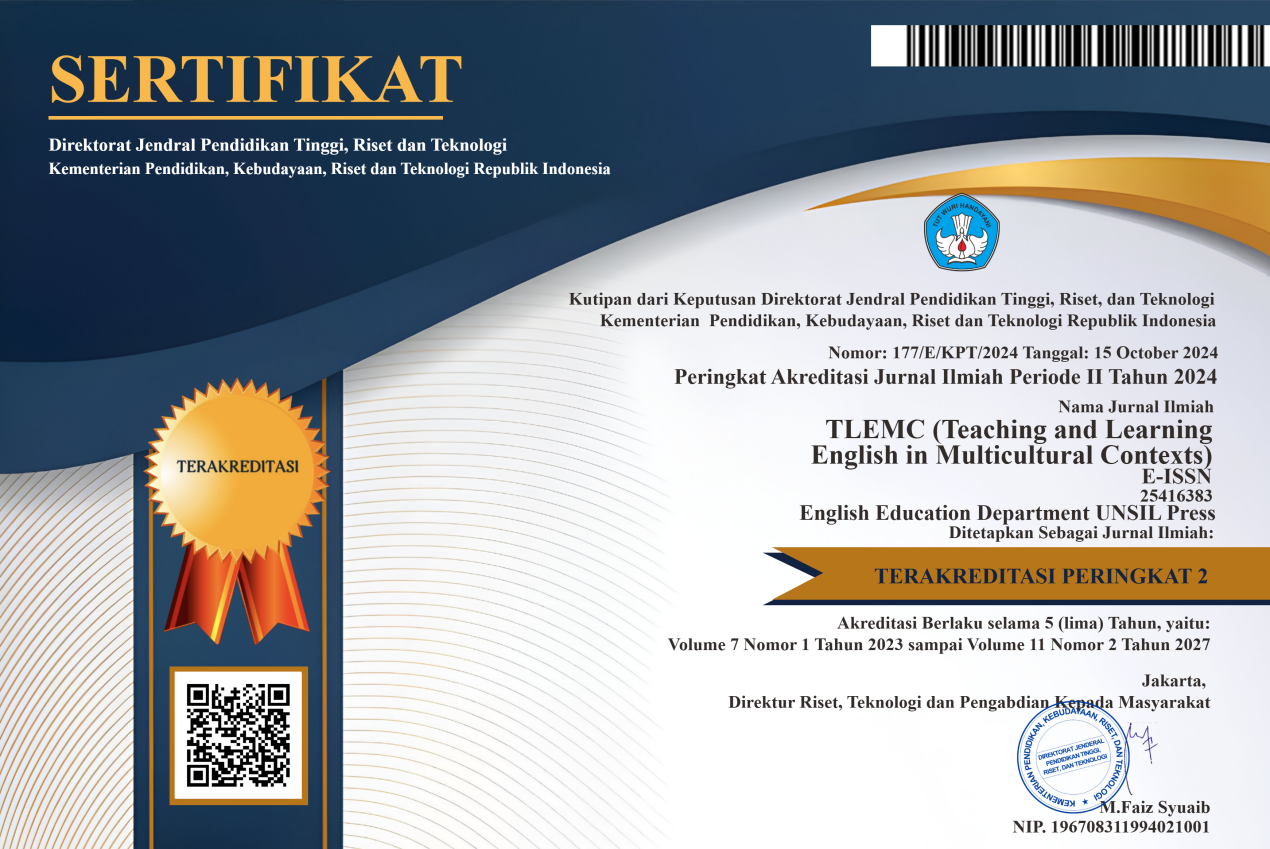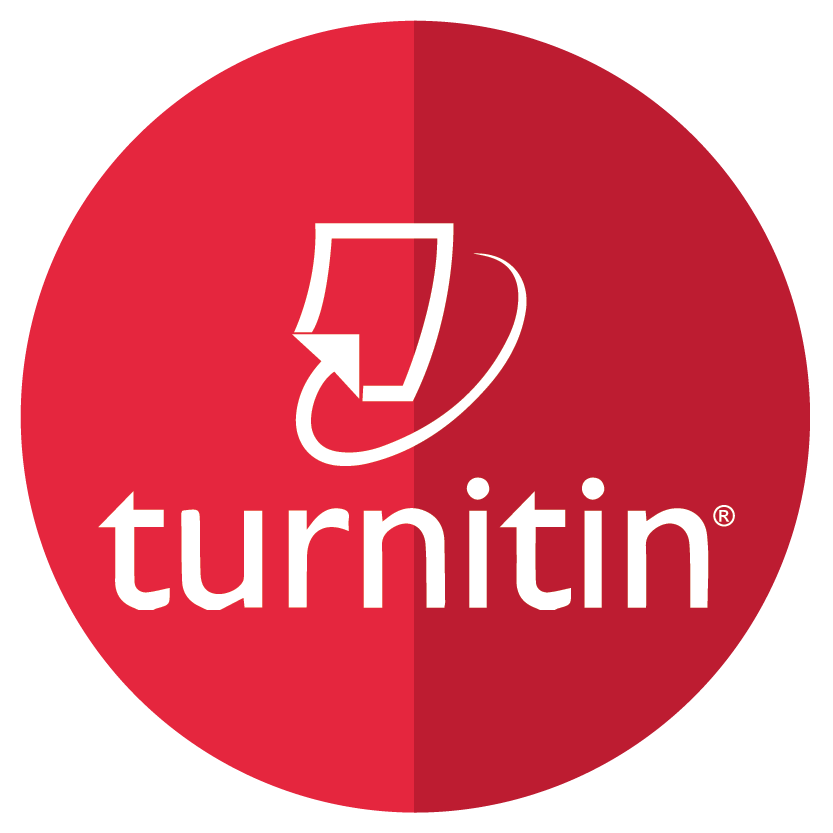Self-Directed Learning Attitudes: A Study on English Department Students
Abstract
This research aims to describe the first-year students’ self-directed learning attitudes by employing a descriptive quantitative approach. This study’s population was the second-semester students of the English education department, n=(95), while the sample was selected through a cluster random sampling technique that consists of 55 students. A questionnaire was used to collect the data and distributed online through Google form. The questionnaire adopted from Williamson (2007) comprises five components of self-directed learning; awareness, learning strategies, learning activities, evaluation, and inter-personal skills. The techniques of data analysis involved collecting the data, presenting the data, and interpreting the data. The results showed that 80% of the students are aware of their responsibility in learning. As for learning strategies and activities, 70.91 – 80% of students considered modern educational interactive technology enhance their learning process effectively. There are 60 – 69.09% of the students who applied the self-assess method and are said to monitor their learning progress in terms of evaluation. Regarding their inter-personal skills, most of the students, with a percentage of 83 – 87.27%, are interested in learning about something they frequently exposed to and feel the need to maintain a good interpersonal relationship with others. In conclusion, most of the students, with a percentage of 72.72%, are high self-directed learners with a positive attitude. The attitudes shown by the students are responsible, initiative, independent, curious, and friendly.
Keywords: Self-directed learning, Language learning, attitude
Full Text:
PDFReferences
Alaga, N. A. C. (2019). Motivation and Attitude of Students towards Learning English Language. March.
Arikunto, S. (2016). Prosedur Penelitian Suatu Pendekatan Praktik. Jakarta: Rineka Cipta.
Chang, M. (2015). Effects of Self-Monitoring on Web-Based Language Learner’ s Performance and Motivation. January 2010.
Creswell, John W. (2014). Research Design, Qualitative, Quantitative, and Mixed Methods Approaches. Fourth ed. Lincoln: Sage Publications.
Garrison, D. R. (1997). Self-Directed Learning: Toward a Comprehensive Model Adult Education Quarterly, 48(1).
Gibbons, M. (2003). The Self-Directed Learning Handbook: Challenging Adolescent Students to Excel. San Francicsco: Jossey-Bass.
Grow, G. O. (1991). Teaching Learners to be Self-Directed. Adult Education Quarterly, 41(3).
Hay, D. B., Kinchin, I., & Lygo-baker, S. (2008). Making learning visible : The role of concept mapping in higher education. Studies in Higher Education. June 2008.
Haris Mudjiman. (2007). Belajar Mandiri (Self-Motivated Learning). Surakarta: LPP UNS dan UNS Press.
Igwenagu, C. (2016). Fundamentals of research methodology and data collection. April.
Khan, I. (2017). Positive Attitude and English Language Learning : Psycho-pedagogic Connections. January 2016.
Knowles, M. (1975). Self-Directed Learning: A Guide for Learners and Teachers. In Shahrouri, E. (2016). The Impact of Garrison’s Model of Self-Directed Learning on Improving Academic Self-Concept for Undergraduate Students, 4(10).
Latchanna G., Dagnew, A. (2009). Attitude of Teachers towards the Use of Active Learning Methods.
Long, H. B. (1983). Guglielmino’s Self-Directed Learning Readiness Scale: A Validation Study. 12.
Odanga, S. J. O. (2019). Strategies for Increasing Students’ Self-motivation Strategies for Increasing Students’ Self-motivation. August 2019.
Raja, R., & Nagasubramani, P. C. (2018). Impact of modern technology in education. Journal of Applied and Advanced Research, 3(1).
Sharma, R., Jain, A., Gupta, N., Garg, S., Batta, M., & Dhir, S. K. (2016). Impact of self ‑ assessment by students on their learning. International Journal of Applied and Basic Medical Research, May 2016.
Sugiyono. (2008). Metode Penelitian Kuantitatif, Kualitatif dan R&D. Bandung: ALFABETA.
Syahrial., Asrial., Sabil H., & Arsil. (2020). Attitudes, Self-Confidence, and Independence in Thematic Learning. Univeral Journal of Educational Research, 8(1).
Thomas, J. W., Strage, A., Curley, R. (2016). Improving Students’ Self-directed Learning : Issues and Guidelines. The Elementary School Journal, 88(3).
Williamson, S. N. (2007). Development of a self-rating scale of self-directed learning. 1975, 79-83.
DOI: https://doi.org/10.37058/tlemc.v6i2.2757
Refbacks
- There are currently no refbacks.
INDEXED BY:
This work is licensed under a Creative Commons Attribution-NonCommercial-ShareAlike 4.0 International License.
![]()
TLEMC (Teaching and Learning English in Multicultural Contexts)
Program Studi Pendidikan Bahasa Inggris
Fakultas Keguruan dan Ilmu Pendidikan
Universitas Siliwangi
Jl. Siliwangi No. 24 Kota Tasikmalaya - 46115
email: tlemc@unsil.ac.id





